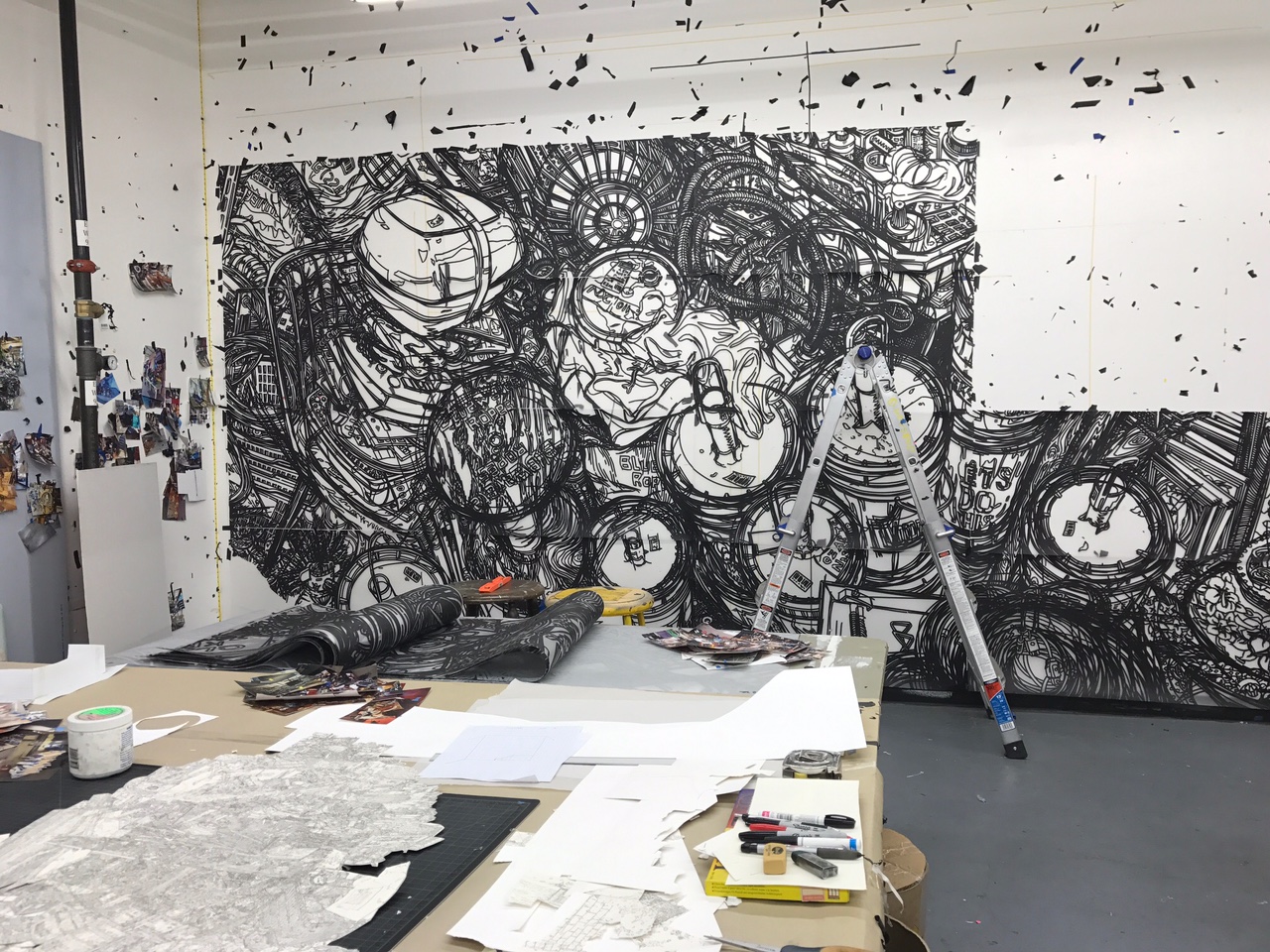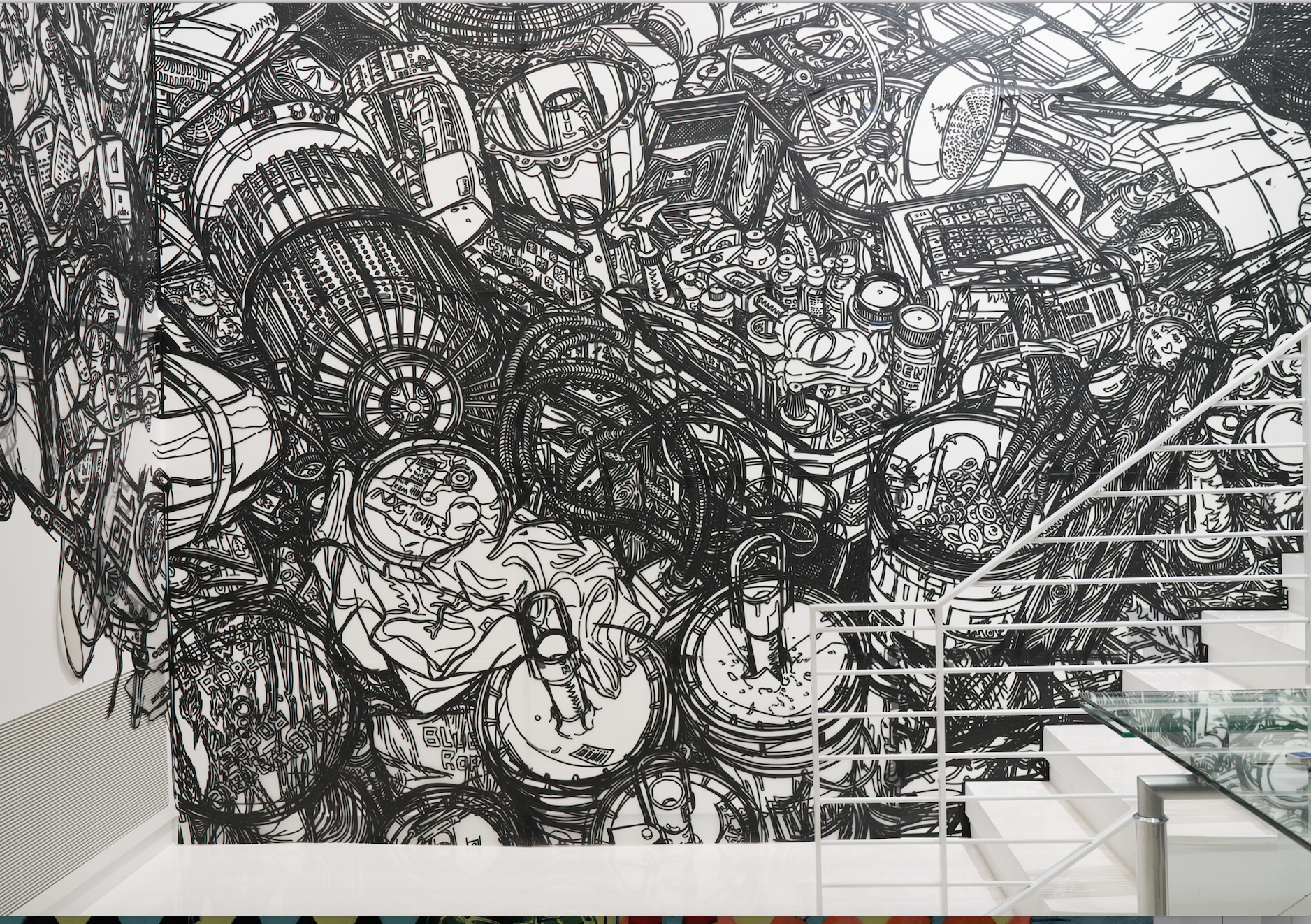Solitaire: Heeseop Yoon and Sara Berman
January 12, 2018 - March 10, 2018
Opening reception on January 12, 6-8pm
Artsy Preview














Essay by Amber Harper, Assistant Curator, Drawing Center
In his book Homo Ludens, the cultural historian Johan Huizinga refers to the act of playing as the construction of “temporary worlds within the ordinary world, dedicated to the performance of an act apart.” In recent years, Huizinga’s theories have been applied by art historians seeking to understand how art practice can model constructive and free rather than oppressive forms of labor. The exhibition Solitaire at Sapar Contemporary considers how works by two artists, Heeseop Yoon and Sara Berman, relate to Huizinga’s characterization of play by building systematic images, each consisting of everyday objects that have been stacked and reconfigured in unfamiliar ways. Through practice that is at once playful and yet highly-structured, both Yoon and Berman create representations of “temporary worlds” by encoding familiar spaces and forms with new meaning.
The five drawings on view in Solitaire by Yoon combine images of personal spaces that have been set aside for accumulation, such as artists’ studios, workshops, closets, and basements. In Still Life #16 and Still Life #19 (both 2012), Yoon’s entangled but meticulously-executed line drawings intertwine outmoded objects, worn furniture, used appliances, and tables lined with second-hand electronics. To create each drawing, Yoon undertakes intensive fieldwork, collecting photographs that range in subject from storage units to landfills and garage sales, thrift stores, cluttered window displays, and littered sidewalks. She then intuitively draws the items found in these spaces, expanding and shifting the shape until the abstract bloom develops into a concrete form. Each of Yoon’s drawings presents a world in microcosm, with the sum of all things an individual may interact with during life. Indeed, Yoon’s labor-intensive works speaks to the irrepressible human compulsion to create spaces for collecting complex configurations of objects even after the items themselves have fallen out of use.
While Yoon makes visible otherwise hidden spaces, Berman’s paintings feature the lived-in rooms of domestic interiors. Drawing on her experience working in the fashion industry, Berman constructs scenes that enfold bold figurative forms in commercial textile designs. On view in Solitaire, Berman’s oil on linen works, entitled All At Once and Everything Never, 2017 and I Was There and Then You No One, 2017, bring together honeycomb and grid motifs that evoke the juxtapositions of kitchen tile and woven carpets or decorative wallpaper and hardwood floor. Stretching across these tableaus, Berman masks delicately-articulated human figures with argyle and harlequin diamond patterns, designs that flatten and imbricate the contours of the body with its surroundings. Like Yoon’s Still Life #16 and Still Life #19, Berman’s paintings direct attention to the sport with which individuals organize, structure, and recompose everyday objects, and how this process can become an extension of self-identity.
Describing play as “the performance of an act apart,” Huizinga emphasizes the tendency of play to break away from the ordinary world. While this holds true for the practice of Yoon and Berman, as both artists explore interior experience in their work, the pieces chosen for Solitaire also speak to the artists’ desire to connect with others. This is perhaps most evident in Yoon’s mural-scale installation, Still Life (2018), which the artist constructed using black masking tape in place of drawn lines. In this site-specific work, Yoon extends the images from her drawings into the real space of the viewer. Berman’s paintings also suggest a form of sociality; by portraying carefully arranged chairs and table settings in her work, Berman addresses the communal tendencies ingrained within the private sphere of home life. As much as Yoon and Berman construct spaces that seem separate from the ordinary world, each artists’ efforts to rationalize social life suggests a deeply-rooted need to communicate an inner complexity that exceeds the bounds of the self.
About Artists
Heeseop Yoon (b. Seoul) completed her BFA at Chung-ang University, Seoul, and she holds an MFA from City College, New York. In 2005 she attended the Skowhegan School of Painting and Sculpture in Maine. In recent years, solo exhibitions of Heeseop’s work have been mounted by Sapar Contemporary as well as the Des Moines Art Center and OZ Arts in Nashville. Her work has been included in group exhibitions in New York at the Brooklyn Museum; Smack Mellon, Brooklyn; and the Bronx Museum of the Arts, as well as at MASS MoCA, North Adams, MA, and the John Michael Kohler Arts Center, Sheboygan, WI.
Known for her intricate mural-scale installations, Yoon’s practice focuses on the accumulation of outmoded and obsolete things. Her labor-intensive, freehand pen-and-ink drawings consist of complex agglomerations of lamps, computer cords, kitchen appliances, and art supplies. Each of Heeseop’s drawings acts as a storage space for images of personal effects, speaking to an irrepressible human compulsion to preserve items, especially those with symbolic significance, long after they have fallen out of use.
Sara Berman (b. London) began her career as a fashion designer and completed her undergraduate degree at Central Saint Martins before receiving her MFA from the Slade School of Fine Art in 2016. Recent solo exhibitions of Berman’s work have been presented by Galerie Huit, Hong Kong. She has also been included in exhibitions at BAK, Utrecht, and in London at the Royal Academy of Arts, Londonewcastle Project Space, Charlie Smith Gallery, and Transition Gallery. In 2017, Berman was included in the Sluice Biennial, London, and she was a finalist for the prestigious BP Portrait Award from the National Portrait Gallery in London in 2015.
Berman’s practice has been influenced by her background in the fashion world. Her paintings address the ways we construct and inhabit clothing and interact within personal and domestic spaces. Alongside her paintings, Berman also creates tapestries as well as sweaters, which she weaves entirely from lint and which blur the line between utilitarian things and objets d’art.

